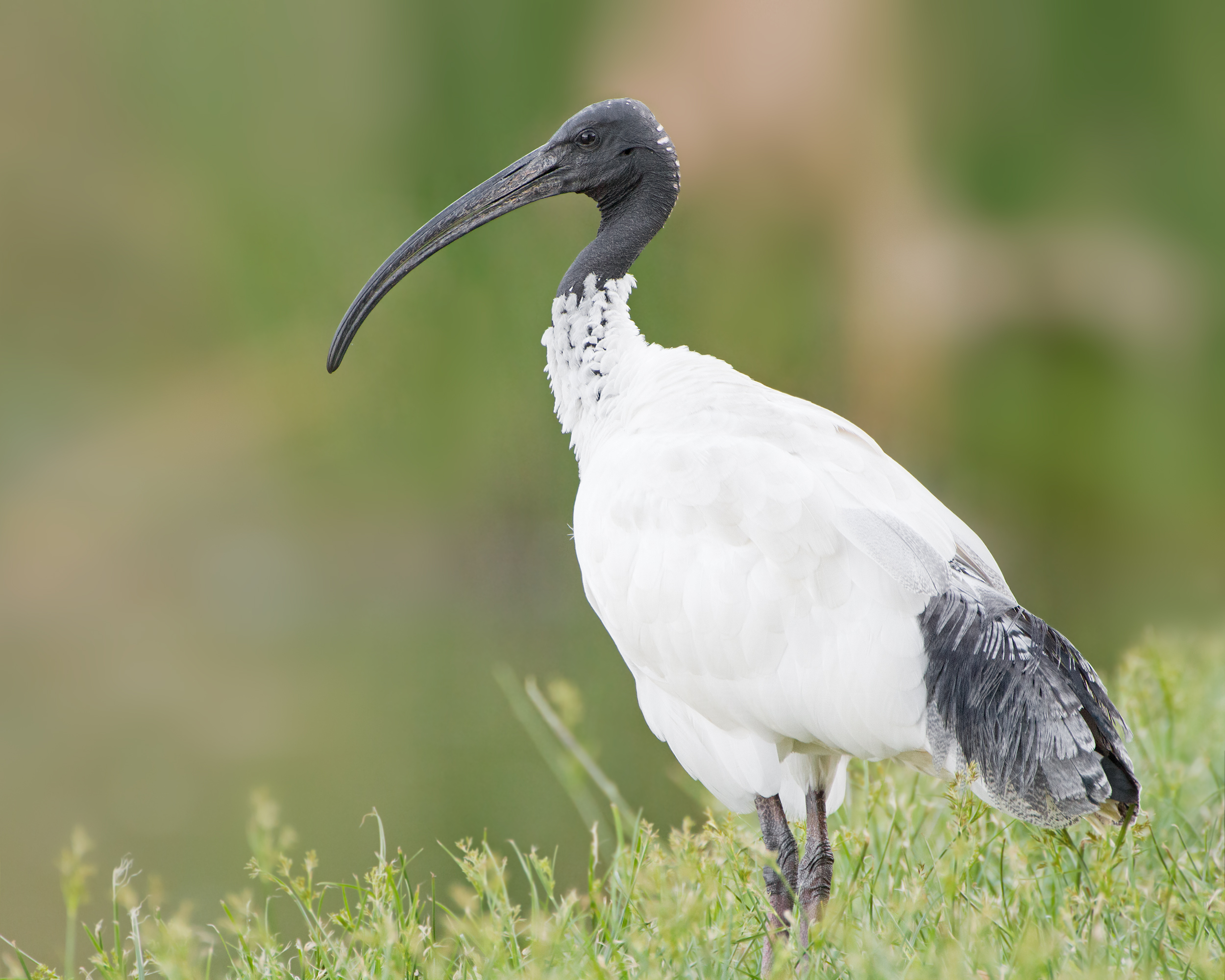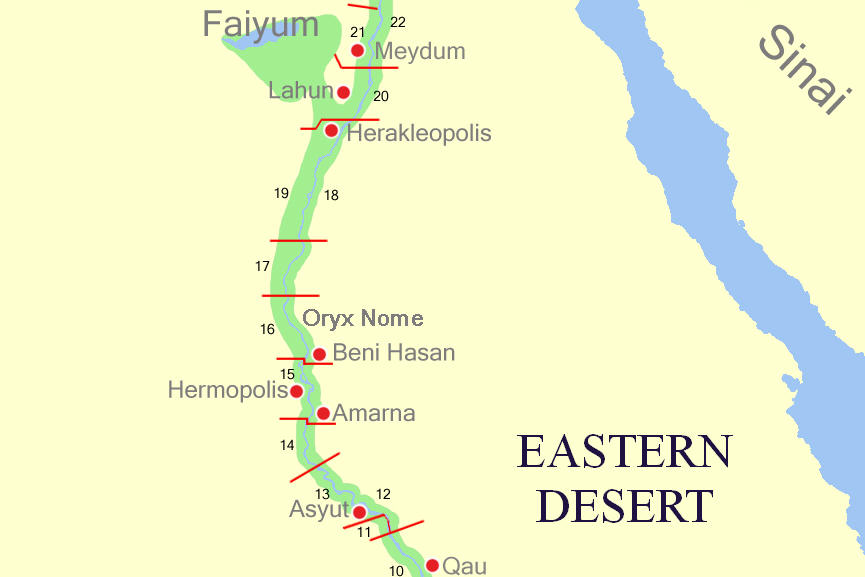|
Thunis
Tuna el-Gebel ( ar, ШЄЩ€Щ†Ш© Ш§Щ„Ш¬ШЁЩ„, cop, вІ‘вІ±вІ›вІ“) was the necropolis of Khmun (Hermopolis Magna). It is the largest known Greco-Roman necropolis in Egypt, dating from the New Kingdom to the Roman Period, and seeing heavy use in the Ptolemaic Period. Tuna el-Gebel is located in Al Minya Governorate in Middle Egypt. History Although most tombs and activities are from the Ptolemaic to Roman periods, there is at least one temple dating back to Amenhotep III. It may be dedicated to Amenhotep III, Thoth, and other local gods. There are also a small number of New Kingdom tombs. The necropolis in Tuna el-Gebel during the Late Period was mostly an animal cemetery. The most common burials took place in underground galleries and were of mummies of ibises and baboons representing Thoth, as well as all kinds of bird mummies. These were most likely a result of nearby animal preserves or breeding areas, as well as local Thoth worship.Lembke, p. 232 The Ptolemaic Period saw ... [...More Info...] [...Related Items...] OR: [Wikipedia] [Google] [Baidu] |
Governorates Of Egypt
Egypt has a Centralisation, centralised system of local government officially called local administration as it is a branch of the Executive (government), Executive. The country is divided into twenty-seven governorates ( '; ; genitive case#Arabic, genitive case: ; plural: '), the top tier of local administration. A governorate is administered by a governor, who is appointed by the President of Egypt and serves at the president's discretion. Governors have the civilian rank of minister and report directly to the Prime Minister of Egypt, prime minister, who chairs the Board of Governors ''(majlis al-muhafzin)'' and meets with them on a regular basis. The Ministry of Local Development, Minister of Local Development coordinates the governors and their governorate's budgets. Overview Egypt generally has four tiers of local administration units: governorates, cities, counties ''(marakiz)'', districts (subdivisions of cities) and villages (subdivisions of counties). There is a tie ... [...More Info...] [...Related Items...] OR: [Wikipedia] [Google] [Baidu] |
Ibis
The ibises () (collective plural ibis; classical plurals ibides and ibes) are a group of long-legged wading birds in the family Threskiornithidae, that inhabit wetlands, forests and plains. "Ibis" derives from the Latin and Ancient Greek word for this group of birds. It also occurs in the scientific name of the cattle egret (''Bubulcus ibis'') mistakenly identified in 1757 as being the sacred ibis. Description Ibises all have long, downcurved bills, and usually feed as a group, probing mud for food items, usually crustaceans. They are monogamous and highly territorial while nesting and feeding. Most nest in trees, often with spoonbills or herons. All extant species are capable of flight, but two extinct genera were flightless, namely the kiwi-like ''Apteribis'' in the Hawaiian Islands, and the peculiar '' Xenicibis'' in Jamaica. The word ''ibis'' comes from Latin ''ibis'' from Greek бј¶ОІО№П‚ ''ibis'' from Egyptian ''hb'', ''hД«b''. Beekes, R. S. P. (2009) ''Etymological Dicti ... [...More Info...] [...Related Items...] OR: [Wikipedia] [Google] [Baidu] |
Egyptian Hieroglyphs
Egyptian hieroglyphs (, ) were the formal writing system used in Ancient Egypt, used for writing the Egyptian language. Hieroglyphs combined logographic, syllabic and alphabetic elements, with some 1,000 distinct characters.There were about 1,000 graphemes in the Old Kingdom period, reduced to around 750 to 850 in the classical language of the Middle Kingdom, but inflated to the order of some 5,000 signs in the Ptolemaic period. Antonio Loprieno, ''Ancient Egyptian: A Linguistic Introduction'' (Cambridge: Cambridge UP, 1995), p. 12. Cursive hieroglyphs were used for religious literature on papyrus and wood. The later hieratic and demotic Egyptian scripts were derived from hieroglyphic writing, as was the Proto-Sinaitic script that later evolved into the Phoenician alphabet. Through the Phoenician alphabet's major child systems (the Greek and Aramaic scripts), the Egyptian hieroglyphic script is ancestral to the majority of scripts in modern use, most prominently the Latin and Cyr ... [...More Info...] [...Related Items...] OR: [Wikipedia] [Google] [Baidu] |
Limestone
Limestone ( calcium carbonate ) is a type of carbonate sedimentary rock which is the main source of the material lime. It is composed mostly of the minerals calcite and aragonite, which are different crystal forms of . Limestone forms when these minerals precipitate out of water containing dissolved calcium. This can take place through both biological and nonbiological processes, though biological processes, such as the accumulation of corals and shells in the sea, have likely been more important for the last 540 million years. Limestone often contains fossils which provide scientists with information on ancient environments and on the evolution of life. About 20% to 25% of sedimentary rock is carbonate rock, and most of this is limestone. The remaining carbonate rock is mostly dolomite, a closely related rock, which contains a high percentage of the mineral dolomite, . ''Magnesian limestone'' is an obsolete and poorly-defined term used variously for dolomite, for limes ... [...More Info...] [...Related Items...] OR: [Wikipedia] [Google] [Baidu] |
Mostafa Waziri
Mostafa Waziri ( ar, Щ…ШµШ·ЩЃЩ‰ Щ€ШІЩЉШ±ЩЉ) is the secretary-general of the Supreme Council of Antiquities The Supreme Council of Antiquities (SCA) was a department of the Egyptian Ministry of Culture from 1994 to 2011. It was the government body responsible for the conservation, protection and regulation of all antiquities and archaeological excavatio ... of Egypt. References External linksYouTube Living people Egyptian archaeologists Year of birth missing (living people) 20th-century archaeologists 21st-century archaeologists {{Egypt-scientist-stub ... [...More Info...] [...Related Items...] OR: [Wikipedia] [Google] [Baidu] |
Minya, Egypt
MinyaAlso spelled '' el...'' or ''al...'' ''...Menia, ...Minia'' or ''...Menya'' ( ar, Ш§Щ„Щ…Щ†ЩЉШ§ ; ) is the capital of the Minya Governorate in Upper Egypt. It is located approximately south of Cairo on the western bank of the Nile River, which flows north through the city. Minya has one of the highest concentration of Coptic Christians in Egypt (approximately 50% of total population). It is the home city of the Minya University, Suzanne Mubarak Center for Arts, the new Minya Museum, and the regional North of Upper Egypt Radio and Television. Etymology The city's Arabic name comes from its Coptic one, rendered in as вІ§вІ™вІ±вІ›вІЏ in Bohairic and вІ§вІ™вІџвІџвІ›вІ‰ in Sahidic, which in turn comes from . The modern city of Minya is often identified with the Ancient Egyptian settlement of Men'at Khufu based on the resemblance of two names, although this claim, proposed by Gauthier and Drew-Bear, is denied by modern Egyptology as the former has a clear Greek etymology. ... [...More Info...] [...Related Items...] OR: [Wikipedia] [Google] [Baidu] |
Sarcophagus
A sarcophagus (plural sarcophagi or sarcophaguses) is a box-like funeral receptacle for a corpse, most commonly carved in stone, and usually displayed above ground, though it may also be buried. The word ''sarcophagus'' comes from the Greek ПѓО¬ПЃОѕ ' meaning "flesh", and П†О±ОіОµбї–ОЅ ' meaning "to eat"; hence ''sarcophagus'' means "flesh-eating", from the phrase ''lithos sarkophagos'' ( О»ОЇОёОїП‚ ПѓО±ПЃОєОїП†О¬ОіОїП‚), "flesh-eating stone". The word also came to refer to a particular kind of limestone that was thought to rapidly facilitate the decomposition of the flesh of corpses contained within it due to the chemical properties of the limestone itself. History of the sarcophagus Sarcophagi were most often designed to remain above ground. The earliest stone sarcophagi were used by Egyptian pharaohs of the 3rd dynasty, which reigned from about 2686 to 2613 B.C. The Hagia Triada sarcophagus is a stone sarcophagus elaborately painted in fresco; one style of later A ... [...More Info...] [...Related Items...] OR: [Wikipedia] [Google] [Baidu] |
Coffin
A coffin is a funerary box used for viewing or keeping a corpse, either for burial or cremation. Sometimes referred to as a casket, any box in which the dead are buried is a coffin, and while a casket was originally regarded as a box for jewelry, use of the word "casket" in this sense began as a euphemism introduced by the undertaker's trade. A distinction is commonly drawn between "coffins" and "caskets", using "coffin" to refer to a tapered hexagonal or octagonal (also considered to be anthropoidal in shape) box and "casket" to refer to a rectangular box, often with a split lid used for viewing the deceased as seen in the picture. Receptacles for cremated and cremulated human ashes (sometimes called cremains) are called urns. Etymology First attested in English in 1380, the word ''coffin'' derives from the Old French , from Latin , which means ''basket'', which is the latinisation of the Greek ОєПЊП†О№ОЅОїП‚ (''kophinos''), ''basket''. The earliest attested form of the word ... [...More Info...] [...Related Items...] OR: [Wikipedia] [Google] [Baidu] |
Elegiac Couplets
The elegiac couplet is a poetic form used by Greek lyric poets for a variety of themes usually of smaller scale than the epic. Roman poets, particularly Catullus, Propertius, Tibullus, and Ovid, adopted the same form in Latin many years later. As with the English heroic couplet, each pair of lines usually makes sense on its own, while forming part of a larger work. Each couplet consists of a dactylic hexameter verse followed by a dactylic pentameter verse. The following is a graphic representation of its scansion: – uu , – uu , – uu , – uu , – uu , – x – uu , – uu , – , , – uu , – uu , – – is one long syllable, u one short syllable, uu is one long or two short syllables, and x is one long or one short syllable (anceps). The form was felt by the ancients to contrast the rising action of the first verse with a falling quality in the second. The sentiment is summarized in a line from Ovid's ''Amores'' I.1.27 ''Sex mihi surgat opus nu ... [...More Info...] [...Related Items...] OR: [Wikipedia] [Google] [Baidu] |
Mummy
A mummy is a dead human or an animal whose soft tissues and organs have been preserved by either intentional or accidental exposure to chemicals, extreme cold, very low humidity, or lack of air, so that the recovered body does not decay further if kept in cool and dry conditions. Some authorities restrict the use of the term to bodies deliberately embalmed with chemicals, but the use of the word to cover accidentally desiccated bodies goes back to at least 1615 AD (see the section Etymology and meaning). Mummies of humans and animals have been found on every continent, both as a result of natural preservation through unusual conditions, and as cultural artifacts. Over one million animal mummies have been found in Egypt, many of which are cats. Many of the Egyptian animal mummies are sacred ibis, and radiocarbon dating suggests the Egyptian Ibis mummies that have been analyzed were from time frame that falls between approximately 450 and 250 BC. In addition to the mummies ... [...More Info...] [...Related Items...] OR: [Wikipedia] [Google] [Baidu] |
Г†gyptus
, conventional_long_name = Roman Egypt , common_name = Egypt , subdivision = Province , nation = the Roman Empire , era = Late antiquity , capital = Alexandria , title_leader = Praefectus Augustalis , image_map = Roman Empire - Aegyptus (125 AD).svg , image_map_caption = Province of Aegyptus in AD 125 , year_start = 30 BC , event_start = Conquest of Ptolemaic Kingdom , event1 = Formation of the Diocese , date_event1 = 390 , year_end = 641 , event_end = Muslim conquest , life_span = 30 BC – 641 AD , stat_year1 = 1st century AD , stat_pop1 = . , today = Egypt , p1 = Ptolemaic Kingdom , flag_p1 = Ptolemaic-Empire 200bc.jpg , s1 = Sasanian Egypt , flag_s1 = Derafsh Kaviani flag of the late Sassanid Empire.svg , s2 = Rashidun Caliphate , flag_s2 = Mohammad adil-Rashidun-empire-at-its-peak-close.PNG , demonym= Egypt ( ; ) was a subdivision of the Roman Empire fro ... [...More Info...] [...Related Items...] OR: [Wikipedia] [Google] [Baidu] |









.jpg)